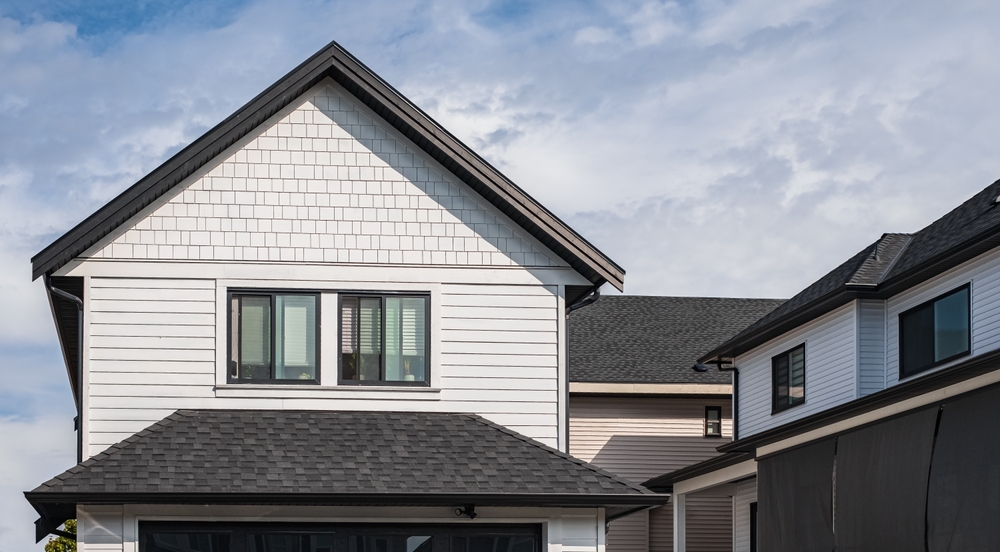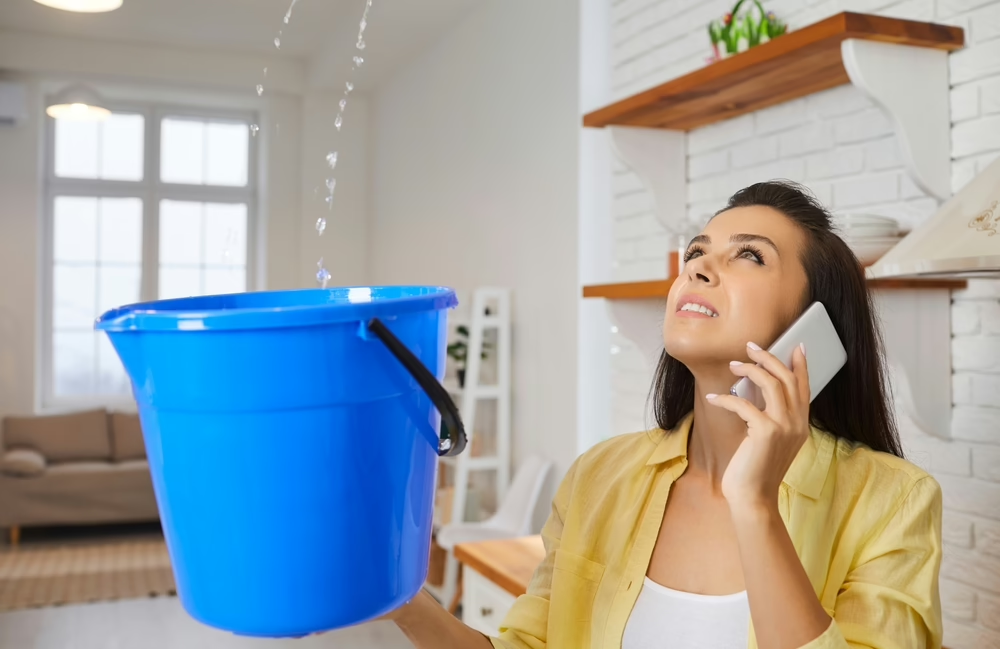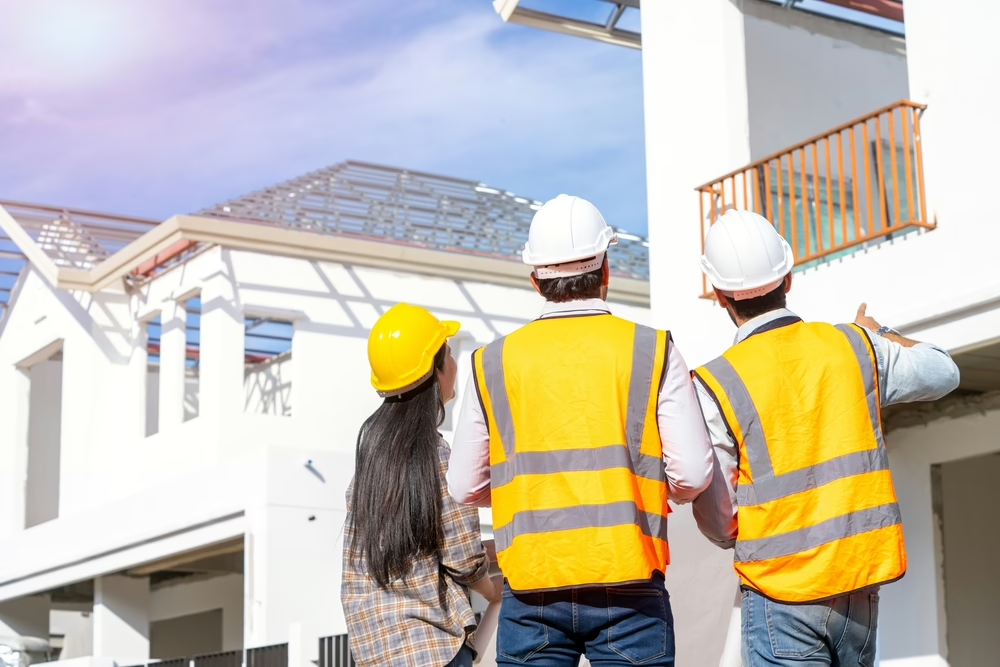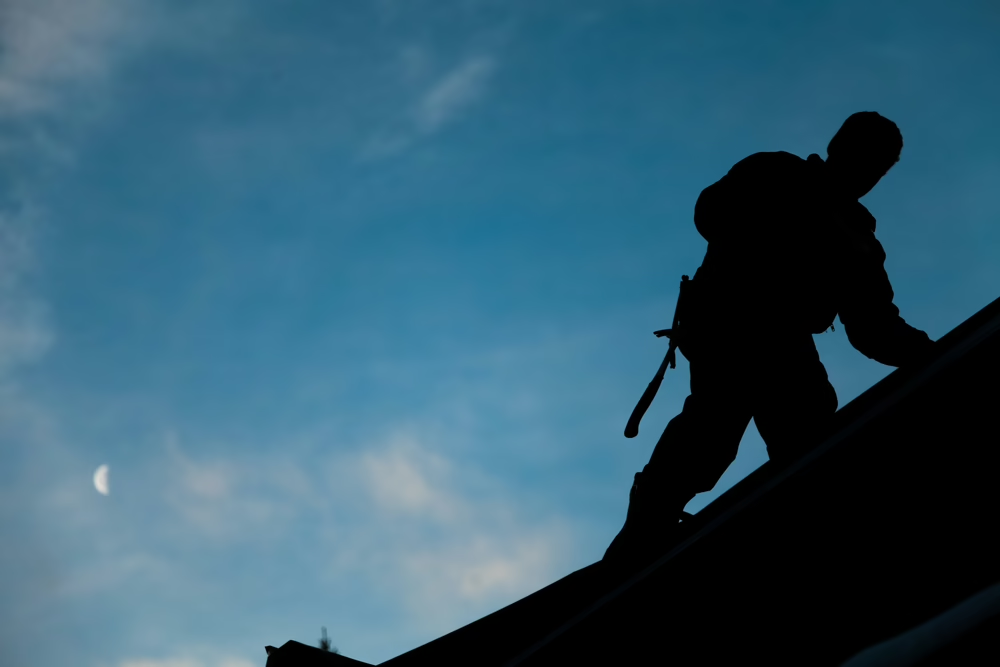Have you ever found yourself puzzled when your roof behaves perfectly fine during a drizzle, but the moment a heavy storm rolls through, water starts sneaking into your home? Maybe you’ve seen a drip from the ceiling in the living room, a water stain slowly spreading near a window, or even a trickle running along the beams in your attic. It almost feels as if your roof has a mind of its own, holding steady when conditions are calm but revealing its weaknesses the instant the rain becomes a true downpour. Why does this happen, and what does it really mean about the condition of your roof?
This is one of the most common questions homeowners ask when they notice leaks that only appear during intense storms. At first glance, it seems strange that a roof can withstand some rain but not all. The reality is that heavy rainfall acts like a stress test. Light showers don’t put enough pressure on your roof to reveal hidden vulnerabilities, but heavy rain pushes water into every crack, seam, and weak spot. It’s not just a matter of chance; it’s your roofing system telling you that something beneath the surface needs attention.
The reassuring news is that these leaks are not random, and with a little knowledge, they can be diagnosed and repaired. Let’s take a closer look at the most common reasons roofs leak during heavy rain, what those leaks mean, and how to take action before they turn into something bigger.
Why Light Rain Doesn’t Cause Problems
The first step in understanding this issue is recognizing why your roof may seem fine most of the time. During light rain, water usually falls gently and in smaller volumes. It runs smoothly off shingles and into gutters without overwhelming the system. Even if your roof has minor vulnerabilities, they may not be exposed when water flow is minimal.
Heavy rain is a different story altogether. We know that water doesn’t simply fall downward. It often comes with gusts of wind that drive it sideways, forcing it into seams and crevices that don’t normally see much water. Intense rainfall also means more volume. Water that would otherwise roll away might start pooling in valleys, pushing under shingles, or spilling over clogged gutters. In short, light rain doesn’t expose your roof’s weaknesses, but heavy rain finds them and pushes through.
The Most Common Causes of Heavy Rain Leaks
One of the leading culprits is damaged or missing shingles. Shingles are your roof’s first line of defense, and when they’re cracked, curled, or torn away, water can easily slip past them. During a storm, this water runs with force, finding its way to the underlayment and eventually into your home.
Another frequent cause is faulty flashing. Flashing is the metal material installed around chimneys, vents, skylights, and other roof penetrations. Its job is to keep water out of areas where shingles can’t provide coverage. If flashing is corroded, loose, or improperly sealed, heavy rain will exploit the weakness.
Your underlayment, the barrier beneath shingles, also plays a key role. If it’s been worn down by age, or if it was installed incorrectly, it won’t hold up under the intensity of heavy storms. This is often a sign that your roof’s overall system is reaching the end of its lifespan.
Gutters and proper gutter installation in Bensalem and the surrounding areas are other, underestimated factors. When they’re clogged or damaged, they can’t channel water away from the roof. Instead, water backs up, seeps under the edges of shingles, or pours down the sides of your home, leading to leaks that are only noticeable during major storms when the system is overwhelmed.
Valleys in the roof, where two slopes meet, are particularly vulnerable. These areas are designed to channel large amounts of water, but if they’re not sealed correctly or if debris has collected there, pooling water can force its way inside.
Chimneys and skylights also deserve attention. Both add beauty and functionality to a home, but they also create high-risk leak zones. Heavy rain can expose weaknesses in seals or caulking around their edges, making them entry points for water.
Finally, attic ventilation problems can play a role. In some cases, what looks like a roof leak is actually condensation caused by poor airflow. When humid storm air meets warm attic air, moisture builds up. This issue tends to worsen during heavy rain, creating the illusion of a roof leak when the real culprit is a ventilation problem.
What These Leaks Mean for Your Roof
Each type of leak tells a different story about your roof. Shingle damage usually points to aging materials or storm impact that has compromised your roof’s protective layer. Flashing issues often highlight poor installation or the natural deterioration of sealants over time. Problems with the underlayment or valleys usually signal that the roofing system itself is wearing out, while gutter-related leaks indicate a maintenance issue that affects the entire home.
Skylight and chimney leaks are reminders that any roof feature requiring seals and caulking will eventually need attention. And if the problem is attic condensation, it suggests that insulation and ventilation upgrades may be needed to protect your home from ongoing moisture issues.
Why Ignoring These Leaks is Risky
It can be tempting to brush off a leak that only appears during certain storms, but doing so is risky. Even occasional leaks can lead to serious long-term consequences.
- Wooden beams and decking may weaken after repeated exposure to water
- Wet insulation quickly loses its effectiveness, raising energy costs
- Mold and mildew thrive in damp environments, leading to health risks and expensive cleanup
Think of a leak as a signal. It’s your roof’s way of letting you know that something has failed or is failing, and addressing it now is far less costly than waiting until it becomes a constant problem.
Table: Why Roofs Leak During Heavy Rain
| Cause | Why It Shows During Heavy Rain | What It Means for You |
| Damaged Shingles | Rain pushes under gaps and cracks | Roof covering is aging or storm-damaged |
| Faulty Flashing | Wind-driven rain sneaks through loose seals | Flashing is deteriorating or poorly installed |
| Weak Underlayment | Barrier can’t withstand storm intensity | Roofing system may be near end of life |
| Clogged Gutters | Water overflows and seeps under shingles | Maintenance is overdue |
| Valleys | Water pools in high-flow areas | Valleys need resealing or debris removal |
| Skylights/Chimneys | Seals fail under pressure | Vulnerable roof features need repair |
| Ventilation Issues | Moisture condenses in attic | Airflow and insulation upgrades required |
How to Identify the Source of the Leak
Finding the exact cause of a leak is rarely straightforward. Water can travel along rafters and pipes before showing up in a completely different location inside your home. Homeowners often begin by inspecting the attic during rainfall, looking for wet insulation, dark stains, or water trails. Roof penetrations such as vents, skylights, and chimneys should be checked carefully, as these are common entry points. Gutters should also be examined to ensure water isn’t backing up or spilling where it shouldn’t.
From the ground, it’s worth taking a look at your shingles to see if any are missing, cracked, or curling. However, even with these steps, leaks can be deceptive. That’s why professional roof inspections are so valuable. Roofers are trained to trace leaks back to their source, something that can be extremely challenging without experience.
What to Do When You Notice a Leak
The right solution depends on the cause. If shingles are missing or damaged, they need to be replaced promptly. Flashing issues require resealing or replacement to restore a watertight barrier. If underlayment has deteriorated, more extensive repair or even roof replacement may be necessary. Gutters need cleaning or repair to restore proper drainage. Valleys, chimneys, and skylights often benefit from resealing with stronger, more durable materials. In the case of ventilation issues, upgrading airflow systems or adding attic fans may be required to reduce condensation.
While some homeowners attempt DIY repairs, most leaks that appear only during heavy rain are best handled by professionals. These leaks often point to larger roofing problems, and patching the surface won’t fix the underlying cause.
Why Professional Help Matters
When water only leaks during heavy rain, it’s a sign that your roof is under pressure. Professional roofers don’t just fix the visible symptoms; they dig deeper to understand why the system failed in the first place. By working with experts, you’ll gain a thorough inspection, long-term solutions instead of temporary patches, and guidance on whether repair or replacement is the smarter investment.
Here’s what professional roofing support typically provides:
- A full inspection that identifies visible and hidden problems
- High-quality repair or replacement materials designed to withstand future storms
- Honest recommendations about the best long-term approach for your home
Most importantly, professional roofers in New Hope ensure that the solution truly addresses the root cause of your leak, not just the water spot you notice indoors.
How to Prevent Future Leaks
Preventing leaks is always easier than repairing them. Regular roof inspections, ideally once a year or before storm season, help catch small problems before they escalate. Cleaning gutters at least twice a year keeps water moving where it should. Trimming back tree branches reduces the risk of storm debris damaging shingles. Addressing small repairs right away prevents them from developing into bigger issues. And if your roof is nearing the end of its lifespan, upgrading materials can provide better protection for years to come.
To make roof care easier, think of prevention in three categories:
- Seasonal maintenance tasks like cleaning gutters and trimming trees
- Scheduled professional inspections to catch issues early
- Long-term planning, including saving for roof replacement before age and wear force an emergency
Final Thoughts
A roof that leaks only during heavy rain may seem like a rare inconvenience, but in truth, it’s an important signal. These leaks reveal vulnerabilities in your roofing system that need to be addressed before they worsen. From damaged shingles to faulty flashing, from clogged gutters to weak valleys, every leak tells a story about your roof’s health. By taking action early, you can prevent damage to your home, avoid costly repairs, and protect your peace of mind.
If you’ve noticed water creeping in during storms, don’t wait until the next downpour to see what happens. Reaching out to the pros at Martin Roofing and Construction guarantees that the problem is identified, repaired, and prevented from returning. The rain may be heavy, but your home should always feel light, dry, and secure.



